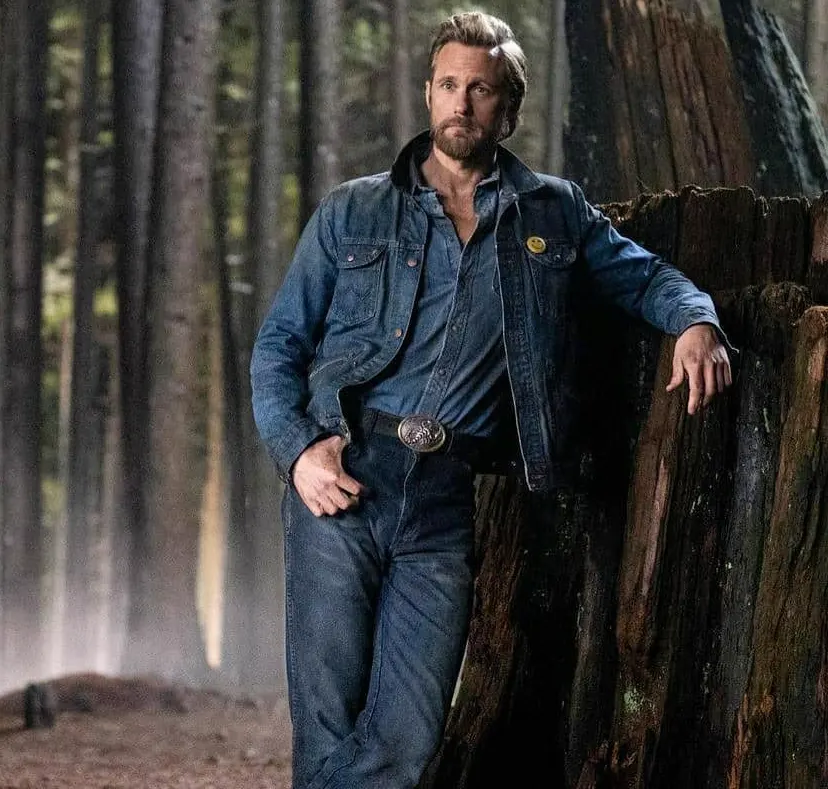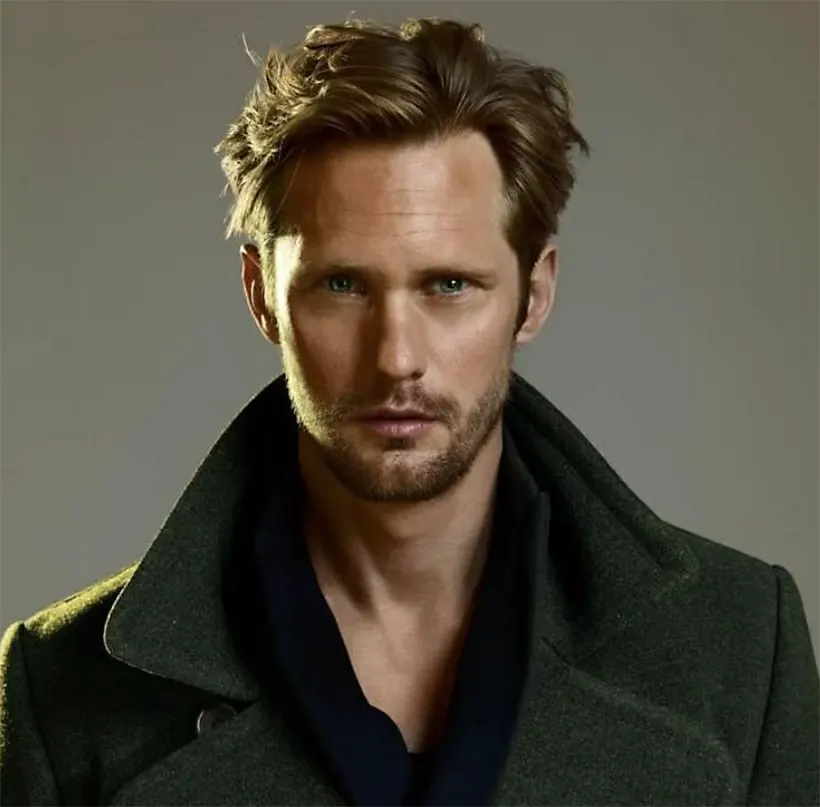Type and hit Enter to search
Experts in aesthetic surgery, dermatology, and beauty bring you the latest trends, research, and advice to help you make informed decisions about your appearance and health.
A web platform dedicated to aesthetic surgery, dermatology, and beauty, where expertise meets innovation, and your desires and needs become our mission. In a world where appearance and health go hand in hand, our platform leads the revolution, delivering the latest trends, research, and expert advice directly to you.
Our team consists of highly skilled professionals in the fields of aesthetic surgery and dermatology, committed to providing reliable information and guidance that will help you make informed choices about your appearance and well-being. We understand that every individual has unique needs and desires, which is why we approach each person with the utmost care and professionalism.
Powered by Aestetica Web Design © 2024
Alexander Skarsgård: What Happens When Acting DNA Evolves into Murderbot
Alexander Skarsgård is not your typical Swedish export—unless your idea of “typical” includes playing a sexy vampire, a war-torn Marine, a toxic billionaire, and now, a rogue android in Murderbot for Apple TV+. Equal parts unsettling and magnetic, Skarsgård doesn’t perform roles; he inhabits them like a glitchy god. Forget the safe biopic tone—this is about an actor who doesn’t just break the mold; he shreds it with Nordic cheekbones and existential dread. Buckle in. This ride has no emotional seatbelt.
Too Weird to Fail: The Unmarketable Genius of Alexander Skarsgård
Skarsgård’s journey from Swedish military service to Hollywood heartthrob is as unconventional as his choice of
Before Alexander Skarsgård became synonymous with brooding complexity and cinematic unpredictability, he was a teenage heartthrob in Sweden—very much against his will. Born in Stockholm in 1976, Alexander Skarsgård’s birthplace may have been central, but his path to stardom was anything but. He landed his first acting gig at age 7, thanks to his father’s proximity to the industry. By 13, he’d starred in a Swedish TV movie that made him briefly famous—and deeply uncomfortable. He walked away from acting entirely, wary of attention and the expectations that came with being “that kid.”
Military discipline and a total career reset
After disappearing from the public eye for nearly a decade, Alexander Skarsgård’s early life and military service took a sharp left turn into something radically un-Hollywood: the Swedish Armed Forces. He enlisted in a unit specializing in anti-sabotage and Arctic warfare. No Instagram, no red carpets—just months of snow, silence, and strategic endurance. It’s a biographical detail that’s often glossed over but crucial to understanding the man beneath the roles. By the time he emerged from the army, Skarsgård was fluent in discomfort—something that would serve him well in every emotionally unhinged character he played later.
National identity, dodging stereotypes, and acting in exile
Though he proudly carries his Swedish nationality, Skarsgård has built a career by dodging the usual Scandinavian clichés. He’s not leaning into the Ikea-export fantasy; he’s been deliberately elusive in shaping how Alexander Skarsgård is perceived outside Sweden. Rather than staying in Stockholm to capitalize on local fame, he left. After his conscription, he moved to London and later New York, enrolling at Marymount Manhattan College to study theater. He wasn’t chasing fame—he was chasing anonymity, and ironically, that made Hollywood notice.

Growing up in a family where acting was the family business, Alexander Skarsgård was surrounded by thespians, including his father Stellan and brothers Gustaf and Bill
Stellan Skarsgård was not just a father—he was a blueprint and a warning
The idea of Alexander Skarsgård’s father as a quiet background influence is laughable. Stellan Skarsgård was a globally respected actor long before his children entered the frame, known for working with auteurs like Lars von Trier and igniting Scandinavian cinema with unsanitized intensity. At home, he wasn’t lecturing his kids about craft; he was busy being in Breaking the Waves. But his choices—odd, bold, often disturbing—clearly rubbed off. Stellan didn’t push his son into acting. If anything, his career was proof of just how taxing the industry could be. The Skarsgård home wasn’t a shrine to fame—it was a lesson in its cost.
Gustaf, Bill, and the sibling rivalry that wasn’t
In a different household, the sight of multiple brothers booking major studio films might have sparked a full-blown succession crisis. But Alexander Skarsgård’s siblings—particularly Gustaf Skarsgård of Vikings and Bill Skarsgård, most famously Pennywise in It—seem to exist in a curious equilibrium. No one’s clawing to be the family’s No. 1 export. Their filmographies are wildly different, deliberately non-competitive. Alexander Skarsgård’s family seems to operate less like a dynasty and more like an acting cult: loosely affiliated, mutually supportive, and each member somehow weirder than the last.
When the family business is existential dread (and HBO contracts)
The idea of a Skarsgård family acting dynasty isn’t hype—it’s statistical inevitability at this point. Between them, the Skarsgårds have covered nearly every genre: Gustaf’s medieval warlords, Bill’s demonic clown, Alexander’s sexually violent husband in Big Little Lies. It’s like they divided the emotional spectrum and picked roles accordingly. The only thing they haven’t done yet is a Skarsgård ensemble project, and honestly, that might be too much existential dread for one screen. But the dynasty works precisely because it doesn’t behave like one. There’s no brand strategy—just talent, risk, and a healthy dose of chaos.
From a Viking prince in The Northman to a tech mogul in Succession, Alexander Skarsgård’s versatility knows no bounds
“The Northman” wasn’t just rage and runes—it was physical annihilation with purpose
Among Alexander Skarsgård’s most transformative roles, The Northman stands as a monument to controlled brutality. As Amleth, a berserker prince driven by revenge, Skarsgård shredded more than just his shirt—he dismantled every expectation of what a “Nordic warrior” should be. Yes, there were abs and axes, but beneath the brawn was something colder, stranger. His Amleth was feral, unpolished, and deliberately non-mythic. He wasn’t trying to be a Marvel hero; he was closer to a silent-era monster, grunting and brooding with primal clarity. No smirks, no winks. Just violence as prophecy.
In “Succession,” Skarsgård weaponized stillness and sarcasm as a tech psychopath
Then came Lukas Matsson in Succession, a Scandinavian tech tycoon who looked like he wandered in from Burning Man but talked like a human blade. Alexander Skarsgård’s filmography rarely recycles, but this shift—from brawling Viking to emotionally vacant billionaire—was whiplash-inducing even by his standards. Matsson was less a character than a tone: chilly, elliptical, and fundamentally unnerving. Skarsgård delivered his lines like someone testing whether language was worth using. The genius of it? He played arrogance as a form of nihilism, not confidence. That dead-eyed gaze wasn’t laziness—it was calculation.
Television vs film: the actor who makes format irrelevant
Whether it’s Alexander Skarsgård’s movies or Alexander Skarsgård’s TV shows, he doesn’t adjust his ambition based on the medium. This is not an actor slumming it between theatrical prestige gigs. In fact, some of his boldest swings—True Blood, Generation Kill, Big Little Lies—have been on the small screen. What ties them together isn’t scale but the refusal to repeat himself. His filmography is a genre rollercoaster: horror, satire, war drama, dark comedy, Nordic epic, dystopian sci-fi. It’s as if he’s actively allergic to comfort zones.

His portrayal of Perry Wright in Big Little Lies earned him critical acclaim and showcased his ability to delve into complex characters
The cruelty was real—but so was the charisma, and that’s why it worked
Alexander Skarsgård’s award-winning performances don’t ask for forgiveness—they demand analysis. In Big Little Lies, his character Perry Wright was monstrous, yes. But Skarsgård didn’t play him like a cartoon villain. He leaned into the disturbing duality: the seductive warmth that coexisted with sociopathic control. It’s a performance that made audiences deeply uncomfortable—and rightly so. The show’s success hinged on that discomfort. Skarsgård understood that abuse, especially in privileged spaces, often wears designer charm before it shows its fangs.
Skarsgård didn’t win his Emmy by playing it safe
When Alexander Skarsgård won the Emmy for his work in Big Little Lies, it wasn’t just recognition of performance—it was a rare mainstream endorsement of moral ambiguity. Perry’s character arc required Skarsgård to turn on a dime: from loving father to violent partner to desperate man unraveling. None of it was telegraphed. There was no “tell” in his eyes. That opacity—that refusal to signal danger—was the real terror. The Alexander Skarsgård Big Little Lies role didn’t just earn trophies; it earned the kind of cultural imprint most prestige actors would sell their legacy for.
How prestige TV turned Skarsgård into a cultural Rorschach
The genius of Skarsgård’s television career is that every viewer projects something different onto him. In Big Little Lies, some saw a cautionary tale. Others saw a case study in gaslighting. Some critics noted how Alexander Skarsgård’s awards marked a turning point in how toxic masculinity was portrayed on screen—not as exaggerated machismo, but as domestic, seductive, even banal. And that, in a twisted way, was his real triumph: not just playing the villain, but making sure you understood why no one saw it coming.
In Apple TV+’s Murderbot, Alexander Skarsgård plays a self-aware security android who’d rather binge-watch soap operas than protect humans
In Murderbot, Alexander Skarsgård’s latest role is, on paper, an android assigned to protect a team of researchers. What he actually delivers is something far stranger: an antisocial, emotionally avoidant machine addicted to escapist television and burdened with just enough free will to be deeply annoyed by it. This isn’t your average sci-fi action lead; this is an android who’s tired of your feelings and would rather be left alone with a low-budget space drama. And Skarsgård doesn’t play it for laughs—he plays it like someone who’s seen too much and healed too little. The performance is oddly human precisely because it resists being emotive.
From sentient to surly: adapting Martha Wells’ cult sensation
The source material, Martha Wells’ Murderbot Diaries, already had a dedicated fanbase, but turning that internal monologue-heavy series into a visually-driven Apple TV+ adaptation was a risk. Skarsgård’s version of Murderbot isn’t a quip machine or a cool killer—it’s a glitch in the system, constantly fighting the algorithm of heroism. Alexander Skarsgård’s role in Murderbot TV series involves threading a fine needle: embodying a non-human entity without leaning on robotic cliché. The stilted gait is deliberate. The voice has just enough bite to suggest a simmering dislike of humanity. And the deadpan delivery? It’s not a choice—it’s a lifestyle.
Why Skarsgård’s Murderbot is a genre pivot, not a detour
For a guy known for Nordic deities, tech billionaires, and abusive husbands, Murderbot might seem like a curveball. But this Murderbot Apple TV+ iteration is weirdly consistent with Skarsgård’s pattern: characters who reject their own roles—within their narrative, within their society, sometimes within their species. This isn’t a detour from the actor’s trajectory; it’s an escalation. Alexander Skarsgård Murderbot is just his latest vessel for exploring how much damage can be done by someone who doesn’t want the job they’re forced to do.
Critics praise Skarsgård’s dry wit and nuanced performance, bringing depth to a character torn between duty and desire for autonomy
The reviews are in: Murderbot isn’t just Skarsgård in metal pants
Alexander Skarsgård’s acting in Murderbot has sparked exactly the kind of polarized response the show seems built to provoke. Some viewers expected more explosions, fewer existential crises. Others got what they came for: a slow-burning meditation on autonomy delivered with acidic wit and uncanny restraint. The praise centers on his refusal to anthropomorphize the character. He doesn’t emote—he simmers. He doesn’t quip—he offends. Critics have noted that his Murderbot reviews read like a paradox: he’s a robot, but more emotionally honest than half the human ensemble.
Not all critics get the joke—and that’s part of the charm
The critical reception of Alexander Skarsgård in Murderbot hasn’t been universally glowing, and that’s not a bug—it’s the point. The show dares the audience to empathize with a being that has no interest in being liked. It’s an anti-performance, in the best sense. Some reviewers at FandomWire and IndieWire praised the audacity; others whined about the lack of “emotional connection.” Skarsgård didn’t deliver emotion—he delivered withdrawal. And that subversion is precisely why the performance has legs. It refuses sentimentality and dares you to meet it in its discomfort.
Murderbot may not win an Emmy, but it’s the role that will outlast them
Skarsgård’s track record with awards (see: Big Little Lies) shows he knows how to hit the sweet spot for voters. But this? This is a different beast. If Alexander Skarsgård’s reviews for Murderbot don’t include gold statues, they’ll still mark a turning point. This is genre work that’s allergic to genre tropes. It’s performance as resistance. And it cements Skarsgård not just as a chameleon, but as an actor who’s willing to tank likability for truth—something most prestige darlings wouldn’t dare.
Beyond the Screen: Skarsgård’s Personal Life and Advocacy
While Alexander Skarsgård keeps his personal life private, his relationships and rumored romances often make headlines
For someone regularly referred to as a sex symbol, Alexander Skarsgård’s personal life is remarkably devoid of Kardashian-level chaos. There’s no attention-hungry social media blitz, no oversharing interviews, no performative pap walks. Instead, Skarsgård has mastered the Hollywood ghost mode: show up on screen, vanish in private. When he does surface—usually on red carpets or the occasional Swedish tabloid—it’s with a carefully calibrated blankness. This isn’t detachment; it’s strategy. He treats fame like a necessary evil, and relationships like something best discussed off-camera.
Rumors, red carpets, and selective public visibility
That doesn’t mean the public hasn’t tried to stitch together Alexander Skarsgård’s relationship timeline from scraps. Over the years, he’s been romantically linked to Alexa Chung, Kate Bosworth, Evan Rachel Wood, and most recently, Tuva Novotny—though no official confirmation ever seems to stick for long. Every time a headline screams Alexander Skarsgård girlfriend spotted, it’s usually paired with a blurry long-lens photo and a tidal wave of speculation. Unlike many actors of his profile, he’s never commodified romance to build brand equity. If anything, he undermines it with smirking indifference. His dating history exists largely as a public Rorschach test—fans see what they want; he says nothing.
The fatherhood headline that wasn’t designed to go viral
In 2023, Skarsgård quietly confirmed he had become a father. No cover story. No People exclusive. Just a passing comment, followed by business as usual. That restraint, that absence of public performance, might be the most subversive move of all. While the media speculated endlessly about whether Alexander Skarsgård’s dating history signaled playboy tendencies or serial monogamy, he built a life behind a firewall of dry humor and Nordic discretion. That firewall still holds.
An advocate for environmental causes and LGBTQ+ rights, Skarsgård uses his platform to support various philanthropic endeavors
Climate issues aren’t PR props—they’re personal
Alexander Skarsgård’s advocacy work in the environmental sector isn’t performative and it isn’t recent. He’s not one of those celebrities who suddenly discovered the climate crisis when it became brand-safe. His support for Arctic conservation, marine protection, and sustainable energy dates back over a decade. He’s worked with organizations like Greenpeace and was part of the “Walking with the Wounded” expedition to the South Pole in 2013—a brutal trek that paired physical punishment with environmental messaging. That journey wasn’t a photo op; it was a statement. No handlers, no entourages. Just frostbite and credibility.
Not an activist mascot, but a real ally
The label Alexander Skarsgård LGBTQ ally gets thrown around, but what gives it weight is the lack of self-congratulation. He’s shown up at RuPaul’s Drag Race events not for viral applause but because he seems to actually enjoy being there. He’s publicly voiced support for LGBTQ+ rights for years, especially in the face of rising global backlash. Again, the key here isn’t what he says—it’s what he doesn’t turn into a spectacle. He doesn’t brandish his allyship like a moral certificate. He just stands up, smiles crookedly, and moves on.
Philanthropy without branding: rare, and refreshing
When it comes to Alexander Skarsgård’s philanthropy, the word that best describes his approach is “low-volume.” No foundation with his name. No branded gala nights. Just direct support, strategic amplification, and the occasional panel appearance where he delivers more than boilerplate soundbites. His environmental activism and social justice work operate with the same stealth as his personal life: intentional, targeted, and never louder than the cause itself. It’s almost as if he actually cares more about the work than the optics—a radical act in an era where virtue is monetized like merch.
The Skarsgård Physique: Fitness and Fashion
From his rigorous training for Tarzan to his casual street style, Alexander Skarsgård’s physical transformation and fashion sense are noteworthy
When Alexander Skarsgård’s fitness regimen and style evolution is discussed, it usually starts with one word: Tarzan. That wasn’t just another role—it was a calculated physical transformation that bordered on psychological warfare. To become vine-swinging, predator-dodging jungle royalty, Skarsgård submitted to a training plan that would’ve made a Navy SEAL weep. Six days a week of weightlifting, circuit training, and fasting windows. No sugar, no dairy, no fun. The body that emerged wasn’t just lean—it was built like a myth. But Skarsgård didn’t play it for thirst traps. He played it straight—almost grim. His version of Tarzan looked like a man who hadn’t eaten carbs since childhood and didn’t miss them.
Post-Tarzan: unbulking with precision, not laziness
What followed was just as intentional. Skarsgård didn’t lock himself into action-hero mode. He shed the bulk, adjusted his fitness routine, and pivoted into roles that required psychological intensity over physical intimidation. In Big Little Lies, he looked like a man with secrets, not six-pack ambitions. In Murderbot, the muscle mass took a backseat to mechanical movement. He doesn’t cling to a single body type—he edits it depending on what the character demands. His workout strategy isn’t about vanity; it’s about calibration.
His body language says more than the dialogue—and that’s the point
Skarsgård uses his physique with precision. When he hunches, you notice. When he stalks across a scene like a Nordic panther, you feel it in your spine. It’s not just the Alexander Skarsgård fitness work—it’s how he inhabits the space around him. Whether padded out or pared down, he moves like someone who understands that posture is plot.
Fashion week, but make it accidental
On the street, Alexander Skarsgård’s fashion exists in a strange, offhanded zone: simultaneously minimalist and feral. He’s allergic to flash, but his casual wear is never quite normcore. It’s calculated dishevelment. Tailored coats, slightly wrinkled tees, a beard that’s either ironic or accidental. He dresses like someone who owns exactly five expensive things and rotates them to confuse the paparazzi. There’s no brand loyalty, no red-carpet try-hard energy. His fashion sense says, “I’ll put on the suit, but only if I can look like I’m trying to get out of it.”
Style evolution without the influencer cringe
Alexander Skarsgård’s style evolution hasn’t been a dramatic red carpet rebrand. There was no “fashion era” or social media debut. He didn’t turn into a walking endorsement deal. Instead, his wardrobe has shifted with his career—moving from functional Swedish understatement to a more tailored, ambivalent elegance. He wears clothes like he wears characters: comfortably, but with just enough restraint to suggest distance. There’s no performative menswear here. No streetwear collabs. Just the aesthetic of a man who might own three pairs of the same boots and is fine with that.
Skarsgård’s aesthetic—both physical and sartorial—isn’t about perfection or trends. It’s about refusal. He refuses to settle into one look, one body type, or one fashion archetype. And that refusal, ironically, is what makes his style so consistent: it’s always controlled, always intentional, and always a little bit feral.
Alexander Skarsgård’s Future Projects and Aspirations
Upcoming Roles: Pillion: A Queer Biker Romance
In Pillion, Alexander Skarsgård takes on the role of Ray, the charismatic leader of a motorcycle club, opposite Harry Melling’s Colin. Described as a “fun and filthy romance,” the film delves into the dynamics of a BDSM relationship within a queer biker community. As Colin is introduced to this new world, he begins to question the nature of his submission and the freedom it offers. Directed by Harry Lighton and based on Adam Mars-Jones’s novel Box Hill, Pillion is set to premiere at the 2025 Cannes Film Festival.
The Moment: Satirizing Pop Stardom
Skarsgård joins Rosanna Arquette, Jamie Demetriou, and Charli XCX in The Moment, a mockumentary directed by Aidan Zamiri. The film follows a pop star navigating the pressures of fame and the music industry ahead of her arena tour debut. Skarsgård portrays a fashionable European creative, adding a satirical edge to the narrative. Currently in production, the release date is yet to be announced.
The Tiger: Man vs. Nature
In The Tiger, directed by Myroslav Slaboshpytskyi, Skarsgård stars as Vanzin, the leader of a team tasked with protecting endangered tigers in 1990s eastern Russia. The film, based on John Vaillant’s book, explores the moral complexities of hunting a vengeful tiger that has attacked humans. Co-starring Dane DeHaan as a young environmental scientist, the film is currently in pre-production.
SOURCES:
Cecilia Suárez – Wikipedia, UN Advocate for the Spotlight Initiative Cecilia Suárez on the gender-based violence activists who give her hope, Cecilia Suarez Smashed Clichés in ‘La Casa De Las Flores’ and Now ABC’s ‘Promised Land’, Cecilia Suarez | LATW – L.A. Theatre Works, List of filmography and awards of Cecilia Suárez – Wikipedia, Cecilia Suárez | Promised Land – ABC



